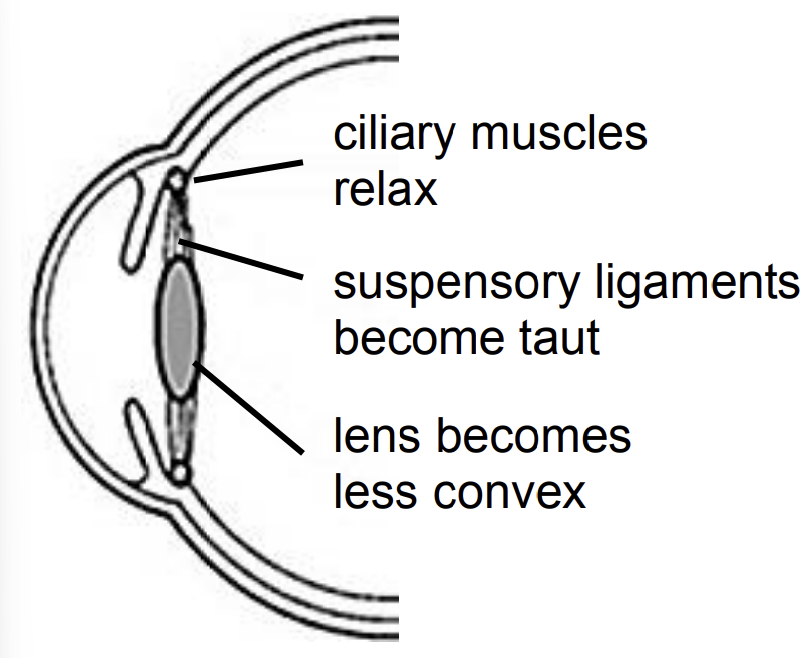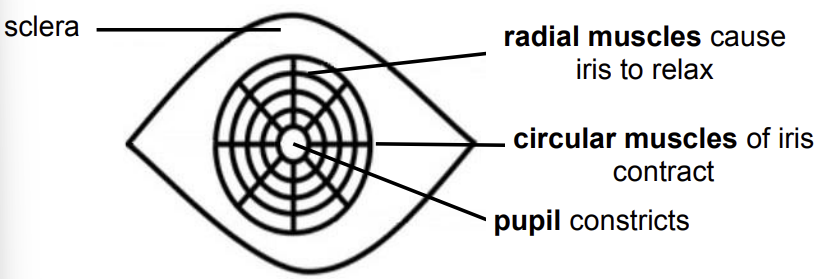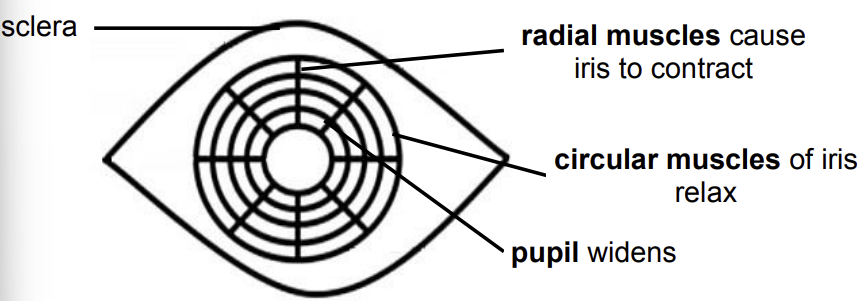Accommodation & Pupillary Mechanism
1/10
There's no tags or description
Looks like no tags are added yet.
Name | Mastery | Learn | Test | Matching | Spaced |
|---|
No study sessions yet.
11 Terms
Binocular Vision
Vision using two eyes with overlapping fields of view so that the separate images are combined and interpreted as one image by the brain
Accommodation
The ability of the lens of the eye to alter its shape for clear vision when viewing both near and distant objects
Near Vision Accommodation
LESS than 6m from object:
-ciliary muscles contract
-suspensory ligaments slacken
-tension on lens decreases
-lens becomes more convex
-causes light rays to bend more
-a clear image is focused on the retina
Distant Vision Accommodation
MORE than 6m from object:
-ciliary muscles relax
-suspensory ligaments tighten
-tension on lens increases
-lens becomes less convex
-causes light rays to bend less
-a clear image is focused on the retina

Near Vision

Distant Vision
Pupillary Mechanism
Regulation of the pupil size to control the amount of light entering the eye
Bright light conditions
-radial muscles cause iris to relax
-circular muscles of the iris contract
-the pupil constricts (gets smaller)
-the amount of light entering the eye is reduced
Dim light conditions
radial muscles cause iris to contract
-circular muscles of the iris relax
-the pupil widens (gets bigger)
-the amount of light entering the eye is increased

Bright light conditions Diagram

Dim light conditions Diagram